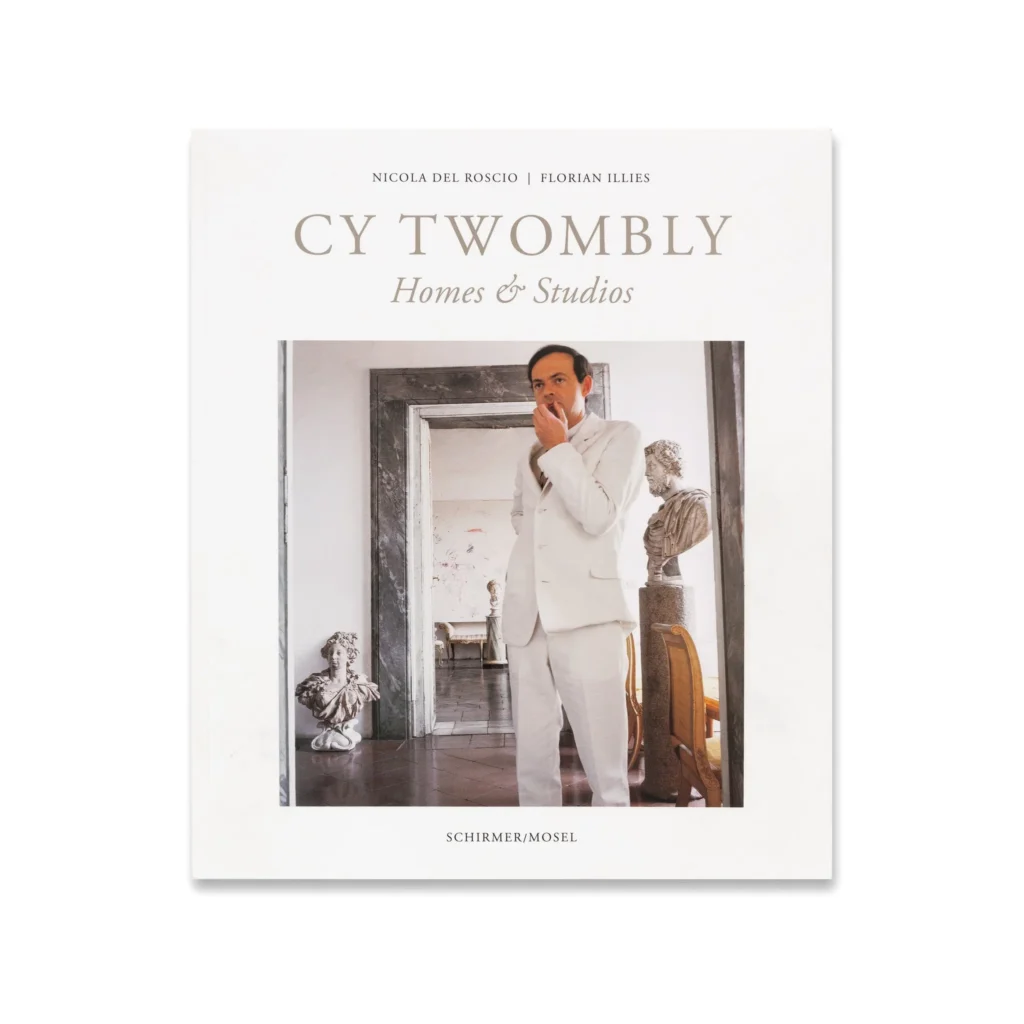
While the arrival of Carlos Peris’s lovely book did not give me much to add on the subject of Cy Twombly’s photography, the arrival of Cy Twombly Homes & Studios has filled the content pipeline to overflowing.
First, don’t sleep on such a book when it first comes out; I missed the hardcover edition by my own negligence.
Second, Nicola Del Roscio is an international treasure, and he should not be forced to write to share his insights and experiences alongside Twombly; sit him down and record him talking, Hans Ulrich Obrist-style, for as long as it takes. For every buck wild story about how much Twombly loathed studio visits, and when a Qatari royal made an unexpected visit to Gaeta via helicopter, he scrambled to set up a decadent luncheon in the courtyard is included, how many treasures and priceless memories are left out?
We just need to get it all while we can, and while he can. [And while recounting this history, may someone will ask Nicola how, while making this book in the midst of the first public disclosures of sexual predation against him, it was decided to use Bruce Weber’s 1994 photo of Twombly’s studio for the frontispiece.]

Homes & Studios, 2019, contains fleeting mentions of the following (non-exhaustive): the palazzo purchased in Tonnicoda, which Twombly felt guilty for abandoning, so he named some works after it ; the castle Twombly almost impulse-bought in the name of either Nicola or his studio assistant Viorel. And at least the third cringe mention (all, I think, posthumous), of Twombly’s closeness with his former nanny, a Black woman named Lula. There is a dissertation or ten to be written about Twombly’s relationship to the South (and Rauschenberg and Johns, for that matter; Twombly told Sally Mann their joint biography should be called, Dickheads from Dixie. Mann also noted that Lula was barely a decade older than Cy; she began working for the Twomblys when she was just thirteen.)
Anyway, point is, my most urgent takeaway from Homes & Studios is that we need more information on Twombly’s Picassos: How many are there? And are they actually Picassos? Because the one above, in Deborah Turbeville’s 1991 photo from Bassano, captioned in 2020 as “Picasso drawing on Chair,” was revealed in 2023, at least, to be a 1985 drawing by Twombly, either of a Picasso or in Picasso’s mode. If this can be mislabeled as a Picasso, what about the others?
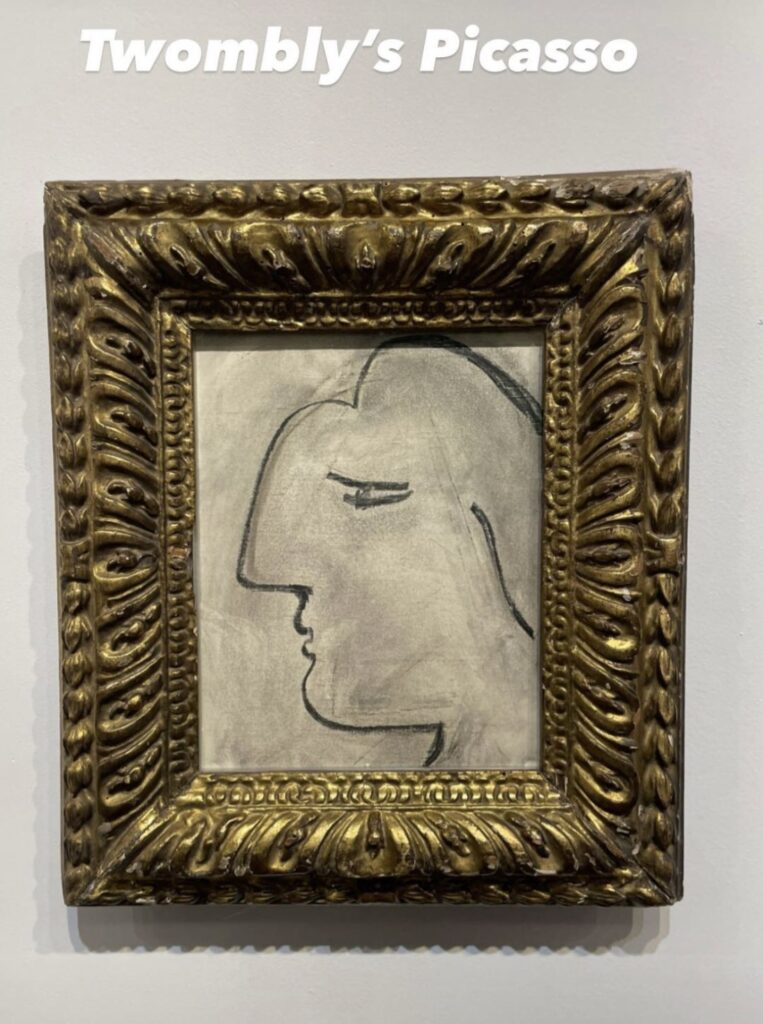
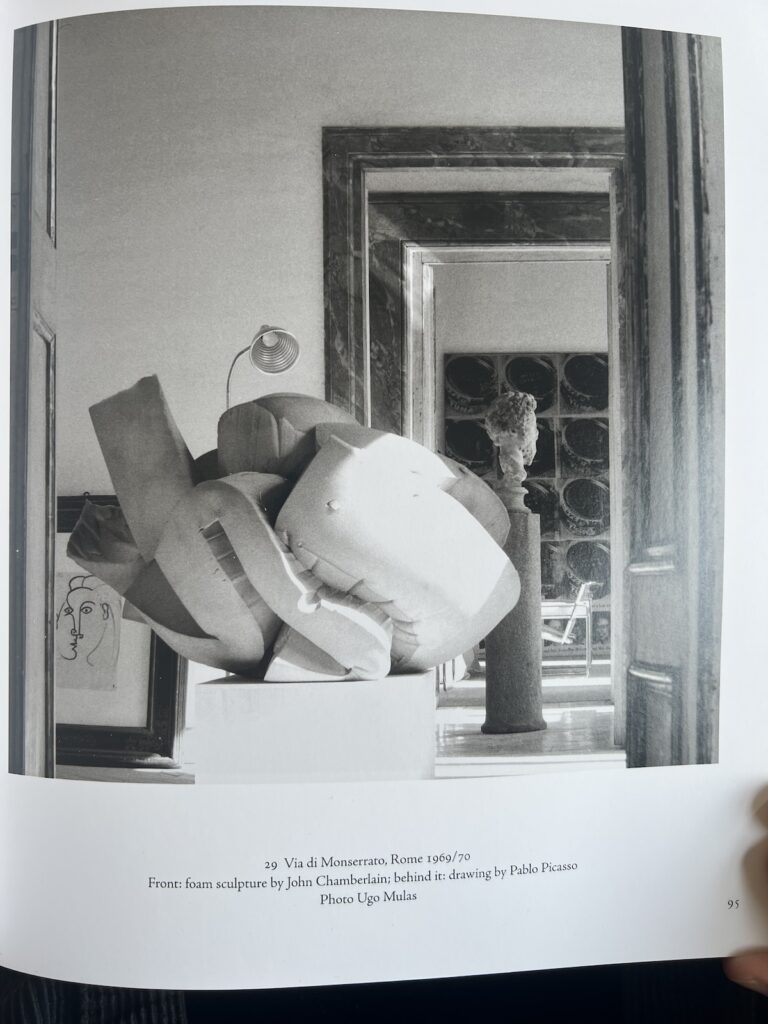
Two other Picassos are mentioned in captions in Homes & Studios, but only one is legible. Both are in Ugo Mulas photos taken at Via di Monserrato in 1969/70. Ignore if you possibly can what has to be the most magnificent and monumental foam sculpture John Chamberlain ever made, which, thanks to the lamp behind it, looks like an angler fish the size of a coelacanth. And look to the left, on the floor, at a “drawing by Pablo Picasso.”
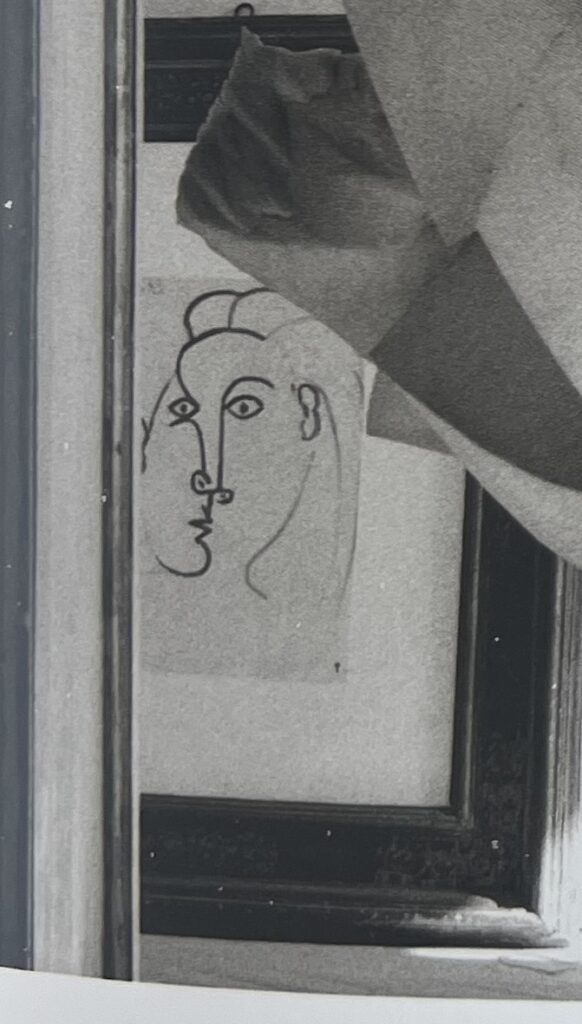
Is this a Picasso, or did Twombly go the distance and replicate the contours and weight of every brush stroke, the date (“3 Octobre 43”), and that little blot in the corner when copying a Picasso work on paper auctioned in 1951? [OK, this one might be a Picasso.]
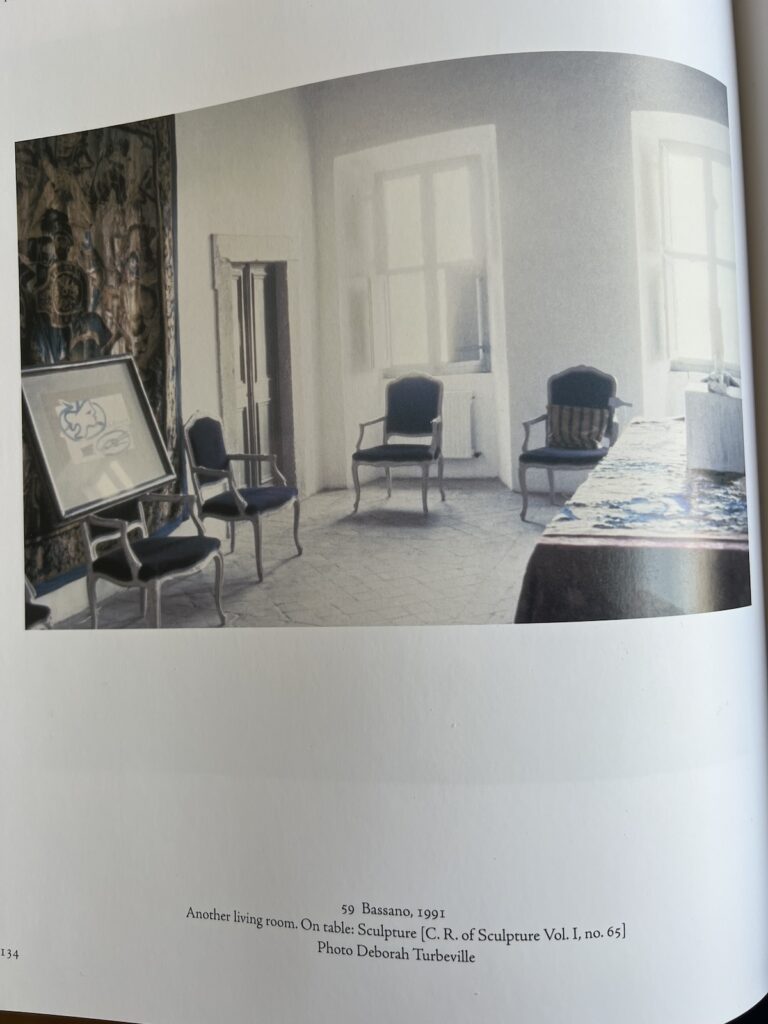
Back to Bassano, and Turbeville, where Twombly sculpture “On table” is mentioned in the caption, but a very Picasso-ish framed picture balanced “On chair” is not.
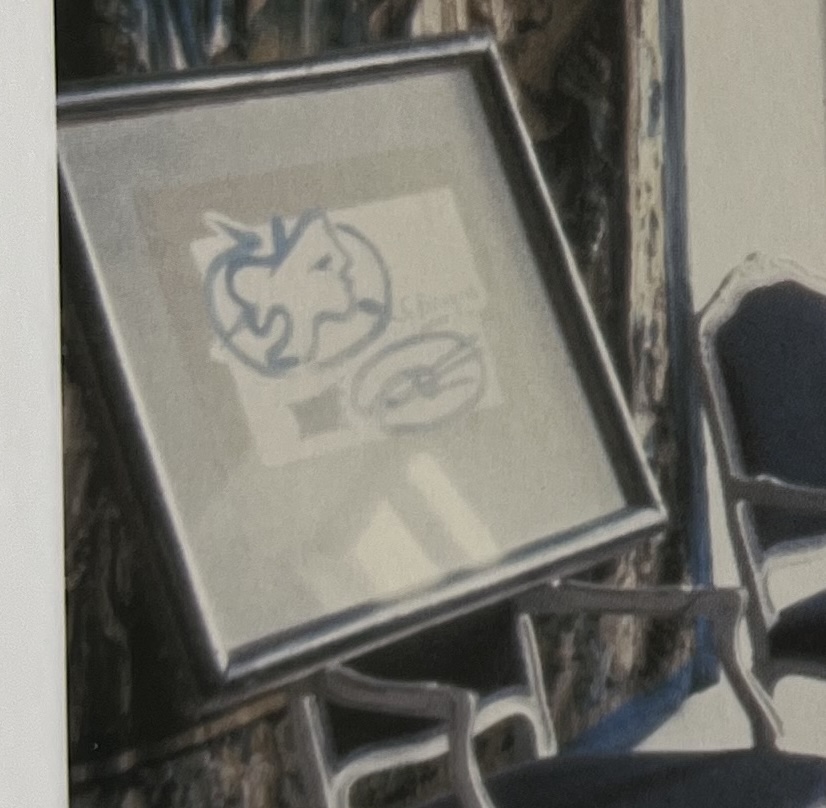
This feels a poster from the Vallauris era, but the way it looks cut out and collaged is confusing to me. What does it say in that indistinct text or signature? Braque. That is a late Braque Tête Grecque something. So the confirmed count of Twombly Picassos still stands at just two.
Actually, three. Because the Picasso Twombly copied which is a recurring presence in Del Roscio’s own Homes & Studios was painted in 1988, but when it first turned up in the NYT Magazine in 2015, it was alongside an anecdote that the first painting Twombly ever made was a Picasso he copied—painted over another painting, apparently—in high school in Lexington, Virginia. So if Nicola’s is not fourth or fifth yet, it is still at least the third.
In the chapter on her and her family’s long friendship with Twombly in her 2015 book, Hold Still: A Memoir with Photographs, Lexington native Sally Mann writes about an incident that now makes me wince. In Spring of 1988, after he’d blown off or missed his older sister’s request to clear his stuff out of the attic of the family home, it was all sold at a surplus auction in a field. In addition to his own objects and artworks from his youth, the sale included “a half-dozen Rauschenberg boxes…painted and adorned with feathers and bones,” and “a cache of subtle still-life photographs from Black Mountain College by both Cy and Rauschenberg, some of them of Twombly paintings that had been destroyed.” These sound like the “scatioli” Rauschenberg exhibited in Italy on their 1951 trip together. Twombly worked and lived on and off in Lexington through 1959, so who knows what else was scattered, lost, or dumped?
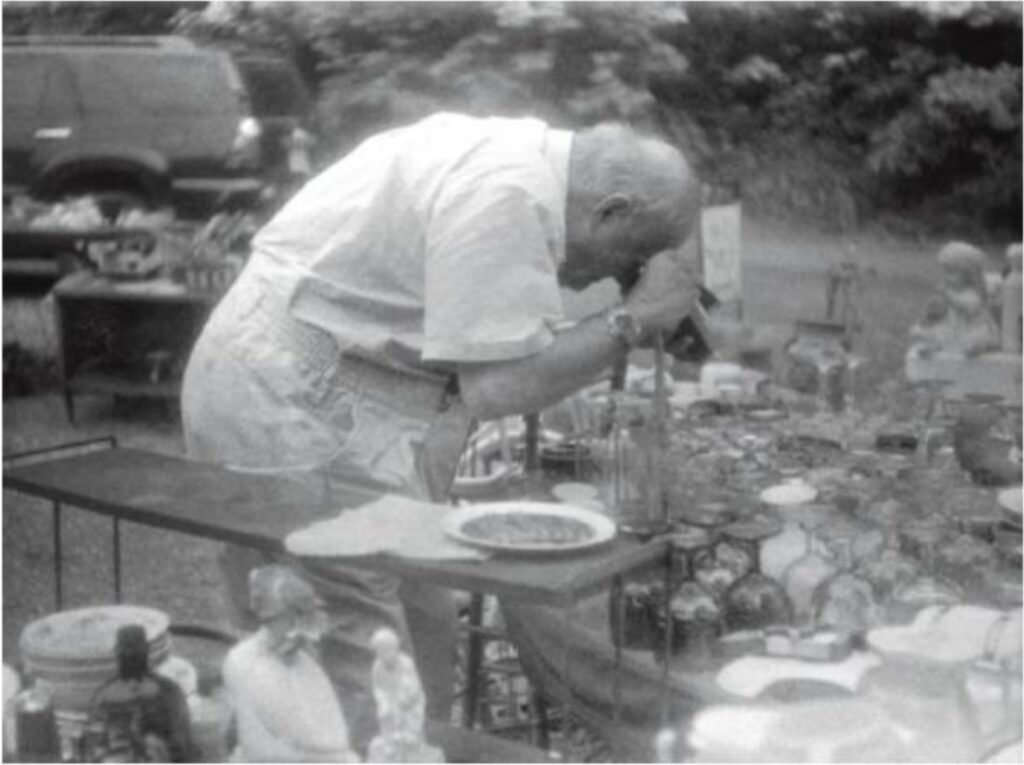
Mann’s date of 1988 could be 1989—Twombly’s mother’s death, which precipitated the sale, was in December 1988—but what’s sure is that Twombly moved back to Lexington in 1993. “For years after the Bustleburg sale,” Mann wrote, “Cy went from one local antique store to another, then broadened his search over the mountains into the Piedmont, asking after any sightings of a little painting he had done in his childhood which was special to him,” which had been sold in the auction.
Was it something else, or did Twombly spend eighteen years visiting antique stores and rummage sales with Sally Mann, Larry Gagosian, or whoever’d drive him, looking for his first Picasso?
Previously, related? Cy Twombly’s Other Picasso
Turns out this is not Cy Twombly’s first Picasso
Destroyed Cy Twombly Backdrop (1953)
